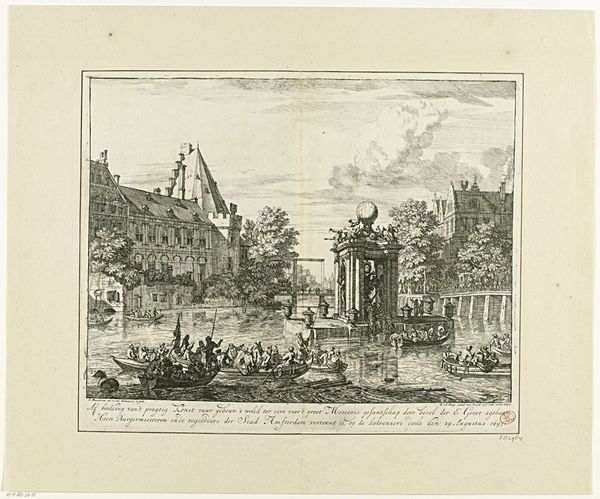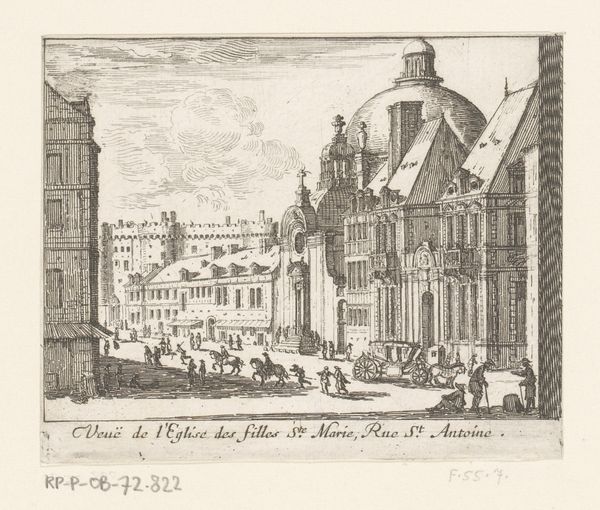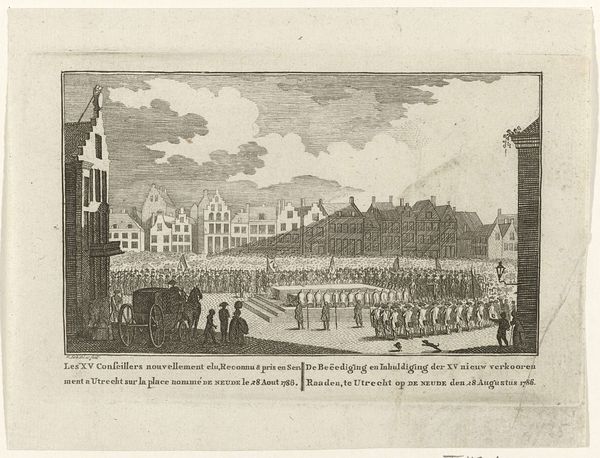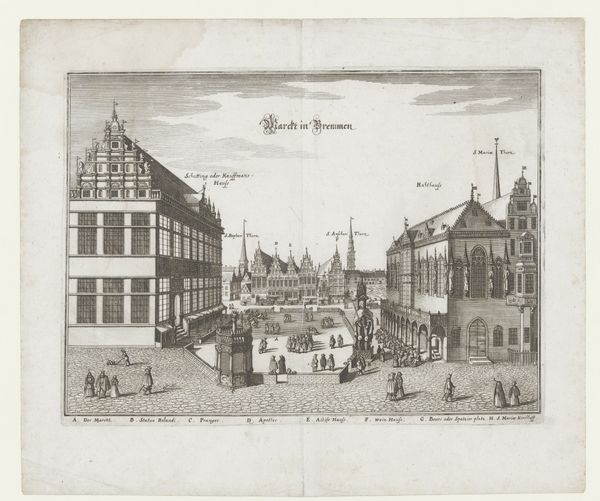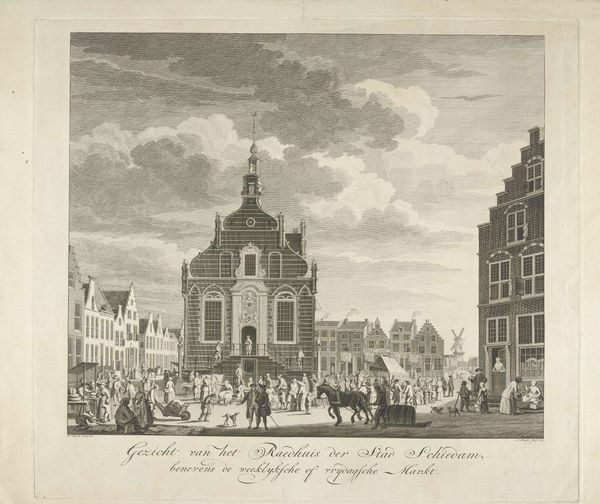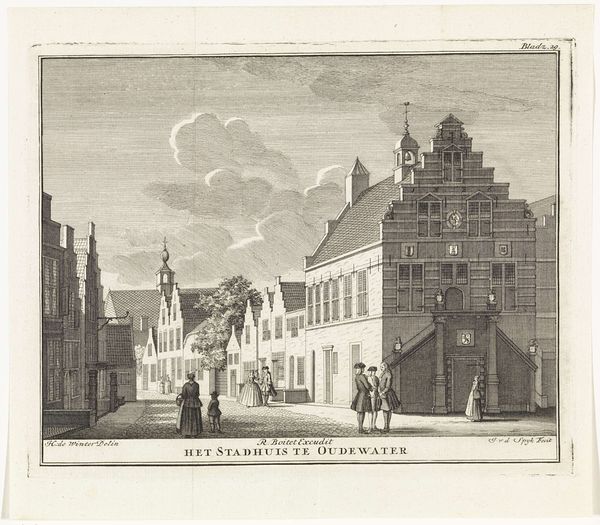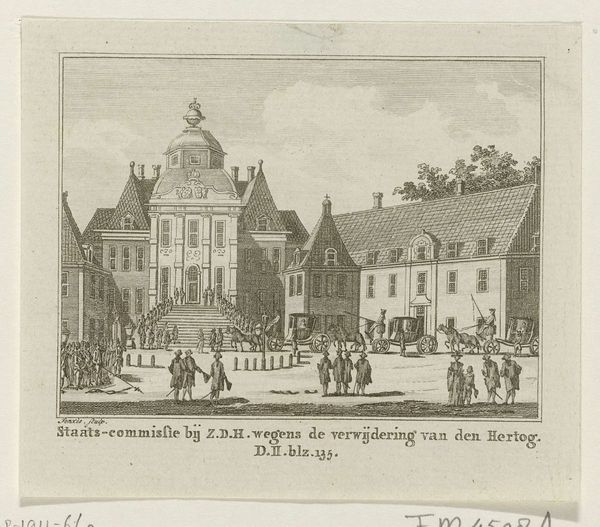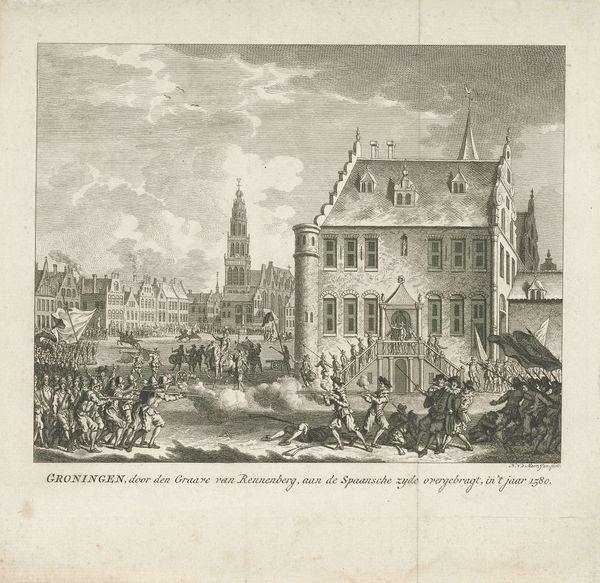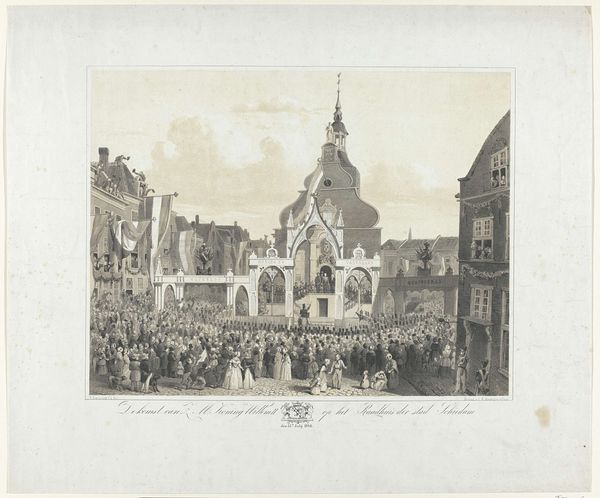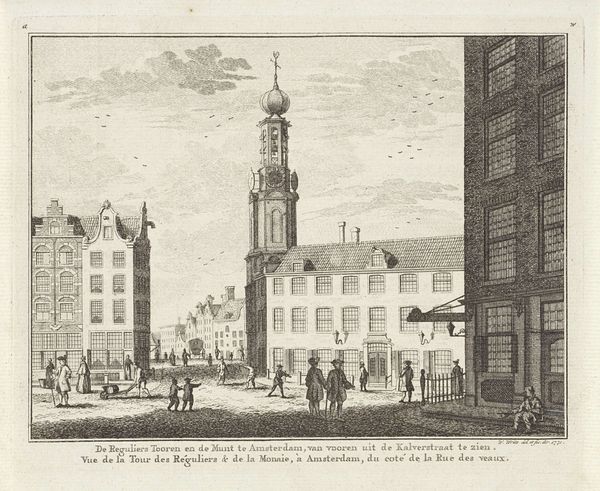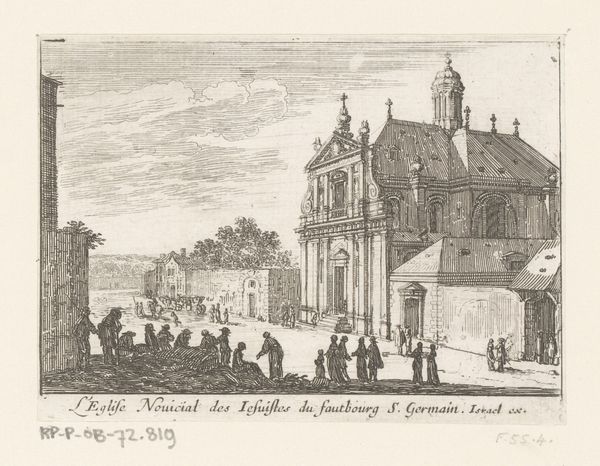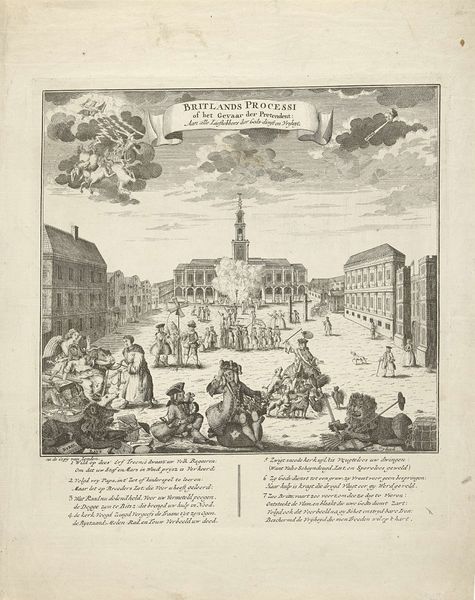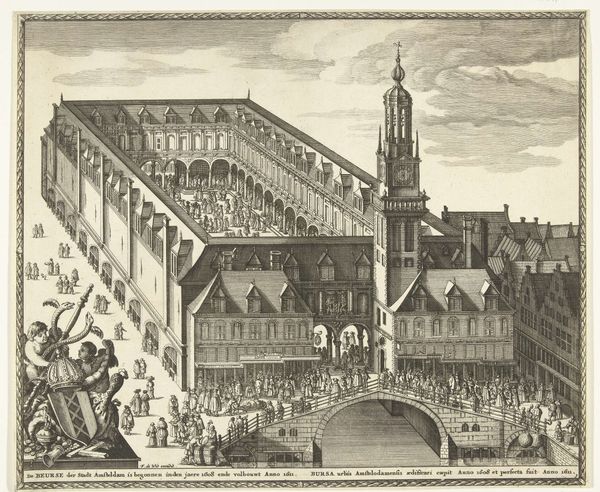
drawing, print, engraving, architecture
#
drawing
#
baroque
#
dutch-golden-age
# print
#
cityscape
#
engraving
#
architecture
Dimensions: height 177 mm, width 239 mm
Copyright: Rijks Museum: Open Domain
Curator: Welcome. We’re looking at “Gezicht op de Nieuwe Kerk te Haarlem,” or "View of the New Church in Haarlem," a cityscape captured between 1688 and 1689 by Romeyn de Hooghe. It's an engraving. Editor: It's immediately striking how static the scene feels, yet there’s so much precise detail. The symmetry of the church against the slightly askew buildings really draws my eye. Curator: Absolutely. De Hooghe, as a printmaker, was deeply involved in the political and social narratives of his time. The New Church, you see, was a focal point in Haarlem, acting not just as a religious institution but a public stage. Editor: I’m intrigued by the use of light here. It's not necessarily naturalistic. See the way light radiates from behind the church’s tower. How does that guide your reading of the work? Curator: I interpret the light as symbolic, suggesting the church as a source of enlightenment and perhaps even stability in a changing world. Remember, the late 17th century Netherlands was experiencing both prosperity and political tension. De Hooghe often imbued his prints with messages reflecting current events. Editor: I’m drawn to the meticulous detailing – the lines of the bricks, the rigging on the distant ships— all contributing to this immense sense of scale within such a small piece. There's also a real sense of activity even though no single figure really dominates. Curator: And note the figures in the foreground. While seemingly incidental, their attire and activity tell us much about social hierarchy and daily life during the Dutch Golden Age. The composition isn’t just about the architecture; it's about placing the Church in a context. Editor: So you're saying, we need to consider the print’s role in disseminating particular social or political ideals, how buildings aren't just architectural forms, they’re loaded signs within a wider symbolic language? Curator: Exactly! It prompts a critical dialogue about the role of institutions and how imagery shapes public perception, even today. Editor: Well, looking closely, there are so many entry points for a curious observer. This print seems to have endless layers waiting to be carefully uncovered.
Comments
No comments
Be the first to comment and join the conversation on the ultimate creative platform.
